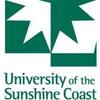The Socio-cultural Context Theme investigated the associations or relationships shared among community, industry and government in relation to knowledge formation and its use in decision-making. In its broadest sense the research set out to identify barriers to adaptive coastal management. Theme Two consisted of two projects: Social Network Analysis and Coastal Champions.
Background
Social networks are central to coastal management and the uptake of science into coastal decision-making. It is through social networks that scientific knowledge is circulated and evaluated. Importantly, social networks are embedded in both formal and informal sources of power.
We explored how institutional structures and cultures, and the social networks of stakeholders shaped decisions affecting the coastal zone. Conducted by the Adelaide University and Flinders University, this theme used case studies to explore the social context for decision-making for coastal developments at four different sites in South Australia. Cases were selected on the basis that the developments had implications for future sea level rise.
The Socio-cultural Context theme also investigated the role that important individuals, coined ‘champions’, play in influencing coastal science uptake into policy. The research investigated champion characteristics and strategies used in influencing the use of science by policy-makers. Furthermore, suggestions were made as to ways in which coastal champions can be fostered.
Social Network Analysis (SNA)
Aims
The research aims of the Socio-cultural Context Theme were to:
- develop a method for exploring the socio-cultural context of coastal management
- identify how and to what extent the current socio-cultural context constrains or enables knowledge transfer/learning between knowledge-makers (such as scientists), and agency decision-makers (such as state and local government authorities)
- analyse the social networks that surrounded coastal knowledge and decision-making in these cases and
- identify constraints to learning and adaptive response created by the socio-cultural context and suggest how barriers may be overcome or modified.
SNA Design and Methods
Social Network Analysis (SNA) seeks to explain how social interaction is conditioned by the patterns of connection between people. SNA suggests that information (including scientific knowledge) is transmitted through networks. How actors are positioned in a network can influence access to information and transmission of information through a network. The relationships between people in a network will also potentially influence how information is used (if it is accepted, trusted) and subsequently if it will used. By investigating and making visible these social networks the informal dimensions of coastal decision-making can be explored.
With the intent to represent a contrast between ‘successful’ and ‘inappropriate’ knowledge-policy engagement processes, the research for this theme was based upon document analysis, social network mapping, and in-depth interviews. Network mapping helped to analyse the processes that led to the decisions. Analysis of the qualitative interview data helped to explain how the social networks functioned that were engaged in generating these decisions.
Key Findings
An exploration of the social or informal networks at play, and that overlay or interact with formal processes, provided explanations as to why formal processes did not always result in the scientifically recommended decision outcomes for a specific place. Conducting social network analyses of the informal interactions between people engaged in decision making for development assessments has allowed the production of tangible and visible maps that illustrate power dimensions, relationships and connections between brokers of information and information flows in the case studies presented.
Emerging from this SNA research are key points about how social networks have influenced knowledge systems and policy formation. These reflect how social networks are but one of the components of coastal decision making:
- The empirical studies suggested that scientific information was readily available for consideration by decision‐makers, but in some instances this was blocked or downplayed by central brokering actors. Risks posed by coastal hazards were acknowledged by most actors involved in the studies. Nevertheless, some actors were unwilling to give credence to scientific opinion because they were driven by other interests (economic, political or community).
- SNA enabled a process that revealed the structural dimensions underlying the different case studies. Structural analysis using SNA measures (centrality, density forms of power and how these shift in relation to formal governance systems). SNA provided an empirical representation of coastal governance networks.
While the work to date has been retrospective, the application of SNA concepts has the capacity to build trust, to diffuse scientific knowledge more effectively, and to identify blockages in flows of information. Importantly if applied as a forecasting method SNA may assist in the building of common goals between diverse users of coastal resources.
Coastal Champions
Key individuals have shaped and instigated important coastal policy initiatives in Australia. However, little is known about the personal motivations as to why these individuals take up such a challenge and what it is that makes them successful in influencing policy-makers. The CSIRO project identified a need to better understand the role of such coastal champions, their motivations, characteristics and strategies for enabling science uptake into policy. No previous studies have considered coastal champions so literature from other disciplines, primarily innovation and sustainable urban water management, was used to develop the research.
Aims
The research aims for investigating the role of champions in coastal science uptake into policy were to:
- Identify key characteristics and motivations of coastal champions
- Develop an understanding of the key strategies used by champions in influencing policy-makers
- Identify ways in which coastal champions can be fostered.
Design and Methods
A mixed-methods approach was employed that consisted of a survey and interviews. An online and paper survey was administered to people involved in coastal management in Australia. The survey enabled peer nomination of champions, identification of characteristics and the ways in which champions were seen to be influencing coastal science uptake by policy-makers. In-depth, semi-structured interviews with key champions followed. The interviews allowed for a deeper investigation into the characteristics and motivations of key individuals functioning as champions in the coastal ‘space’. An understanding emerged from the studies of the strategies used by champions to make them successful influencers of the use of coastal science in coastal policy formation.
Key Findings
The Champions study identified 14 key characteristics associated with coastal champions. A conceptual model of a coastal champion and a six-step process for fostering coastal champions was developed.
Many of the key strategies used by coastal champions influencing uptake of science in policy-making fit into two categories:
1. Communication
- Understand people’s views and values
- Communicate clearly through dissemination of information
- Use the media and other avenues for communicating to a broad audience
2. Network use
- Take time to develop relationships
- Attend relevant conferences, workshops and symposiums
- Act as a facilitator in ‘getting the right people involved’
The academic literature suggests that once an understanding of a type of champion has been developed, through identification of characteristics, motivations and strategies, these individuals can then be identified and strategically used in ensuring best practice coastal management occurs. Furthermore, people involved in coastal management, who appear to possess champion qualities, can be fostered to ensure that they continue to develop into individuals with high levels of influence in policy and projects within the coastal space.










